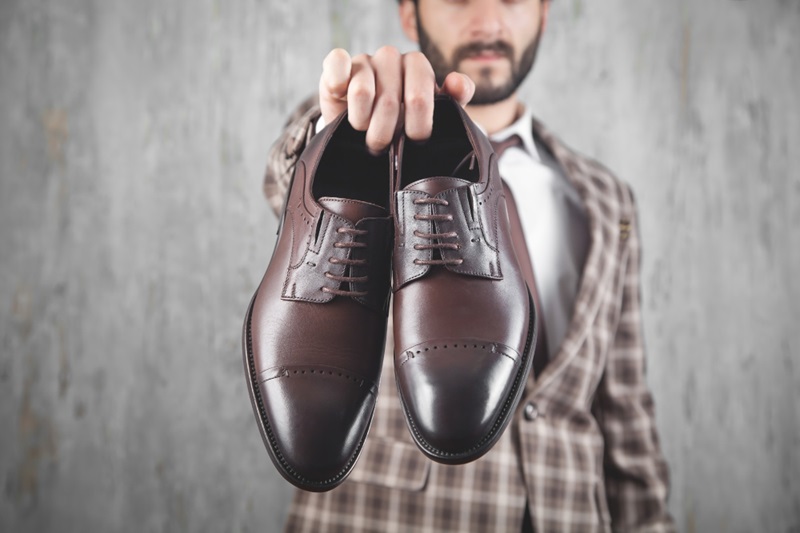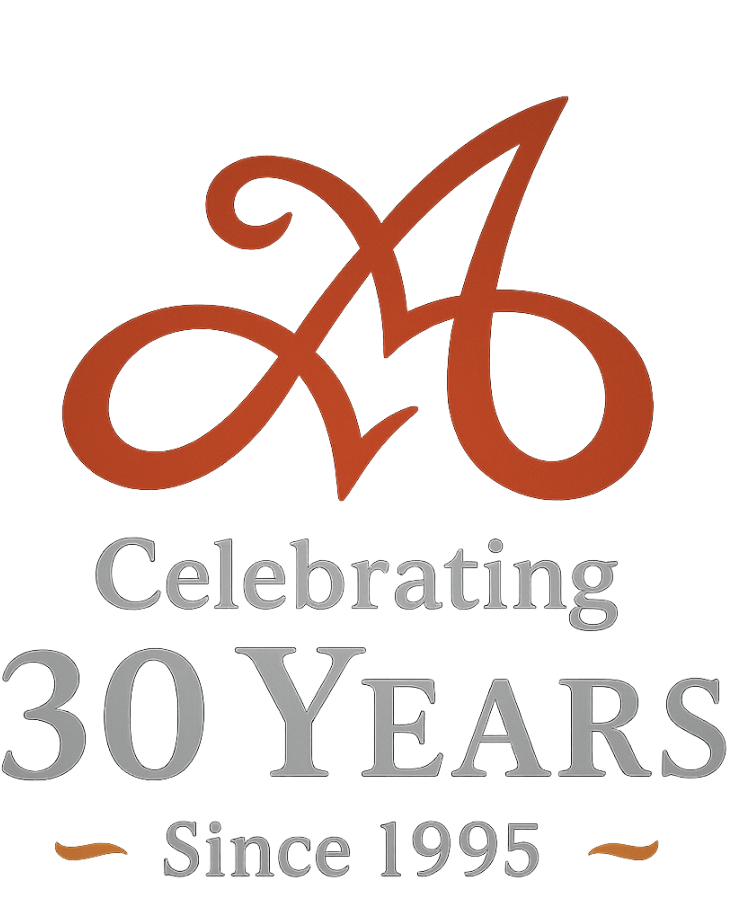What Should You Look for in High-Quality Men’s Dress Shoes?
 Every gentleman’s wardrobe stands on a solid foundation of shoes. The right pair can enhance your appearance, boosting both style and confidence. From sleek Oxfords to versatile Derbies, each style serves a distinct purpose and pairs with different outfits for various occasions. As we learn the art of choosing, wearing, and caring for these essential pieces of footwear, you’ll learn how each pair brings a unique flair to your ensembles. Whether for formal events or casual days, understanding and maintaining men’s dress shoes will equip you to make the best choices for your style needs. And do you know what OKC people are liking about these shoes?
Every gentleman’s wardrobe stands on a solid foundation of shoes. The right pair can enhance your appearance, boosting both style and confidence. From sleek Oxfords to versatile Derbies, each style serves a distinct purpose and pairs with different outfits for various occasions. As we learn the art of choosing, wearing, and caring for these essential pieces of footwear, you’ll learn how each pair brings a unique flair to your ensembles. Whether for formal events or casual days, understanding and maintaining men’s dress shoes will equip you to make the best choices for your style needs. And do you know what OKC people are liking about these shoes?
Basics Of Men’s Dress Shoes
Before exploring the different styles, it’s crucial to grasp why certain shoes pair better with specific outfits. Knowing the reasons behind these pairings can empower you to experiment confidently with various combinations, ensuring that your choices not only look good but also make sense stylistically.
Key Styles Of Men’s Dress Shoes
- Oxfords: Also known as balmoral, often considered the gold standard of men’s dress shoes, Oxfords are characterized by their closed lacing system, which offers a sleek and streamlined appearance. Perfect for formal occasions, these shoes are best paired with custom suits and other professional attire.
- Derbies: Similar to Oxfords, Derbies feature an open lacing system, which gives them a slightly more relaxed look. This style is versatile enough for both office settings and casual outings.
- Brogues: Recognizable by their decorative perforations and detailing, brogues add a touch of flair and sophistication to any outfit. They can vary in formality, depending on the extent of the broguing, making them suitable for everything from business attire to smart casual wear.
- Loafers: The quintessential slip-on shoes, loafers are all about convenience and comfort. Available in materials like leather and suede, they can elevate a casual look or add a laid-back vibe to more formal attire.
- Monk Straps: Featuring a buckle and strap instead of lacing, monk strap shoes offer a modern twist on classic styles. They strike a fine balance between formal and casual, making them a popular choice for fashion-forward gentlemen.
Differentiating Between Oxford Vs. Derby
Timeless Elegance of Oxford Shoes: Oxfords, also known as Balmoral shoes, epitomize formal wear with a “closed lacing” system where shoelace eyelets are attached under the vamp. This sleek design renders them ideal for business and formal occasions, enhancing a polished and sophisticated look.
Versatility and Comfort of Derby Shoes: Derby shoes, or Bluchers, feature an “open lacing” system with eyelets sewn above the vamp, offering a relaxed and accessible style. This less formal look is more comfortable, especially for those with high insteps, making Derbies versatile enough for sports coats, jeans, and semi-formal attire.
Special Considerations for Boots: The distinction between Oxfords and Derbies extends to boots. Balmoral boots mirror the formal style of Oxfords with closed lacing, while Derby boots offer casual flexibility, suitable for diverse environments.
Fit and Comfort: Choosing between an Oxford and a Derby often depends on personal fit preferences. Oxfords have a snugger fit ideal for narrow feet, whereas Derbies offer more room and flexibility, accommodating a broader range of foot shapes.
Understanding Formality In Men’s Dress Shoes
When it comes to men’s dress shoes, the level of formality is often dictated by simplicity, color, and design. Explore the nuances that define the formality of men’s footwear and provides insights into selecting the appropriate style for various occasions.
The Formula for Formality
The core principle in determining shoe formality is relatively straightforward: the plainer and darker the shoe, the more formal it is perceived to be. This concept mirrors the traditional view of men’s custom suits, where a plain, dark suit signifies the height of formality. Similarly, in the world of men’s dress shoes, styles like the black Oxford exemplify this principle. These shoes are designed with minimal embellishment and a sleek, clean appearance that aligns perfectly with formal attire such as tuxedos and business suits.
The Role of Shoe Design in Formal Settings
More formal shoes often feature a more pointed toe. This design complements the sharp lines and structured appearance of formal wear, such as custom suits and tuxedos. The pointed shape of the shoe works harmoniously with the crisp lines of suit lapels and creased trousers, enhancing the overall aesthetic of formal attire. This consistency in design extends to formal settings, where every element of an outfit contributes to a cohesive and polished look.
Equation for Formality: Plain + Dark + Pointy = Formal
Conversely, as men’s dress shoes deviate from this formula, they generally become more casual. Introducing broguing—decorative perforations on the shoe—or lighter colors shifts a shoe’s appearance toward casual wear. Brogues are not merely ornamental; they add character to shoes and make them suitable for less formal occasions.
Casual Shoe Characteristics
Casual men’s dress shoes often feature softer, rounder shapes and lighter colors, which reflect a more laid-back style. These elements make the shoes less suited for formal attire but ideal for pairing with casual slacks or jeans. For example, a soft-shaped wingtip Blucher is a perfect match for relaxed outfits, including soft-shouldered sports jackets and denim. The relaxed silhouette of these shoes complements the informal nature of casual clothing, creating a harmonious look.
Mastering The Art Of Choosing Quality Men’s Dress Shoes
Selecting high-quality men’s dress shoes involves understanding the various elements that contribute to their craftsmanship and longevity. Here’s a concise guide to help you make informed choices:
- Quality Over Quantity: Prioritize the construction and material quality of shoes over having multiple pairs. Shoes that are well-made offer better longevity and comfort.
- Understanding Leather: The term “leather” varies significantly in quality. “Genuine leather” can range from excellent to poor quality, so it’s important to assess the leather beyond just its label.
- Formal vs. Casual: Typically, simpler and darker shoes are more formal, while lighter and more embellished shoes tend to be casual. If you are wearing a custom suit made in OKC, you can pair both casual and formal shoes with it.
- Price vs. Quality: A higher price tag does not always guarantee superior quality. Evaluate the construction and materials rather than the brand prestige.
- Fit and Comfort: Consider the fit, especially if you have specific needs like a high instep. Well-fitting shoes can significantly enhance comfort and shoe life.
- Production Quantity: Brands that produce in large quantities often compromise on quality. Smaller batches usually indicate more attention to detail.
- Resole Capability: High-end shoes often feature a construction that allows for resoling, extending the lifespan of the footwear.
- Handmade and Bespoke Options: These represent the pinnacle of luxury in men’s dress shoes, offering customized fits and exclusive designs akin to the experience of driving a high-end sports car.
- Second-hand Market: For those on a budget, considering high-quality second-hand shoes can be a cost-effective option. This market often has barely used shoes available at a fraction of the price.
- Entry-Level Recommendations: For beginners, opting for reasonably priced, reputable brands can provide a balance between quality and affordability. Be aware of brands that have shifted production overseas, as this can affect the consistency of quality.
- Break-in Period: Some shoes may require a break-in period to reach optimal comfort. This is normal, but the duration and intensity can vary by brand and model.
Essential Shoe Care Tips for Men’s Dress Shoes
Proper care and maintenance of men’s dress shoes are crucial to ensure their longevity and appearance. Here’s a concise guide on the basic elements of shoe care:
- Moisturize Regularly: Leather shoes should be moisturized 3-6 times a year with a high-quality leather lotion to prevent drying and cracking.
- Routine Brushing: Use a horse hair brush to remove surface dirt and maintain the appearance of your shoes. A quick 10-20 second brush after each wear can significantly improve their longevity.
- Use Shoe Trees: Insert shoe trees when not wearing your shoes to maintain their shape, reduce creases, and minimize odors.
- Rest Your Shoes: Avoid wearing the same pair on consecutive days to allow them to dry out fully, preventing premature wear.
- Regular Shining: Maintain the luster of your shoes with a cream polish every few weeks. Clean with a damp cloth, apply polish in circular motions, let absorb, then buff to a shine with a horse hair brush.
Step Up Your Style With Allton’s
Looking for the perfect pair of men’s dress shoes in OKC to pair with custom suits? Visit us at Allton’s Clothiers, where we blend style with durability to ensure your footwear makes the right statement for every occasion. Let us help you find the ideal shoes to complement your wardrobe.
